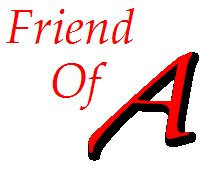This may not be everyone's cup of tea, but Karlheinz Stockhausen (who died on Wednesday, Dec. 5th) was arguably one of the most important composers of serious art music in the second half of the 20th century, and certainly one of the most innovative in terms of his use of electronics and compositional technique. This piece, Kontakte, was finished in 1960 and consists of an electronic tape, piano and percussion. The pitches, dynamics and timbres employed were determined by application of the serial ('twelve-tone') technique first developed by Schoenberg, but then pushed to its logical (and in many ways, musically unfortunate) conclusion by Webern where conventional instruments are concerned.
A word about serial composition: it is a technique that encourages the working-out of an internal logic which can't be experienced via performance, but only yields its' secrets to analysis. In an extreme version, it can be said that a given composition is in a sense reducible to the analysis. If that sounds austere and somewhat removed from your experience, hey, join the club. It's been said that some very smart people can actually identify the particular tone row used where pitches are concerned (Morton Feldman is often cited), but I don't have that facility, and (with the possible exception of one former teacher, now deceased) I don't know anyone else who can do that either. And deducing the mathematical relationships when they are used to derive other things (rhythm, meter, timbre, etc.) is completely hopeless.
Stockhausen's music is more interesting than Webern's, however, in part because of the use of non-conventional sound sources (tape, early synthesizers, controlled feedback or other signal processing), and in part because many of his pieces feature a virtuostic use of solo percussion.
As an example of the former, consider this amazing site, which uses an interactive player resembling an electronic sound module to render sections of his piece Hymnen, which makes music out of manipulations of snippets of radio broadcasts, spoken text, national anthems and bursts of radio 'noise'. You can play with the stereo field and appreciate some of the things Stockhausen did, though if memory serves Hymnen was originally realized in quadrophonic sound.
As an example of his work with percussion, his piece Zyklus has been performed many times precisely because it offers a solo percussionist (such as the amazing Stephen Schick) a highly theatrical platform to demonstrate his/her chops. Check it out if you're interested. This is a guy who exerted an influence on people as diverse as Stravinksy and the Beatles.
12/08/2007
KONTAKTE!
Subscribe to:
Post Comments (Atom)




No comments:
Post a Comment